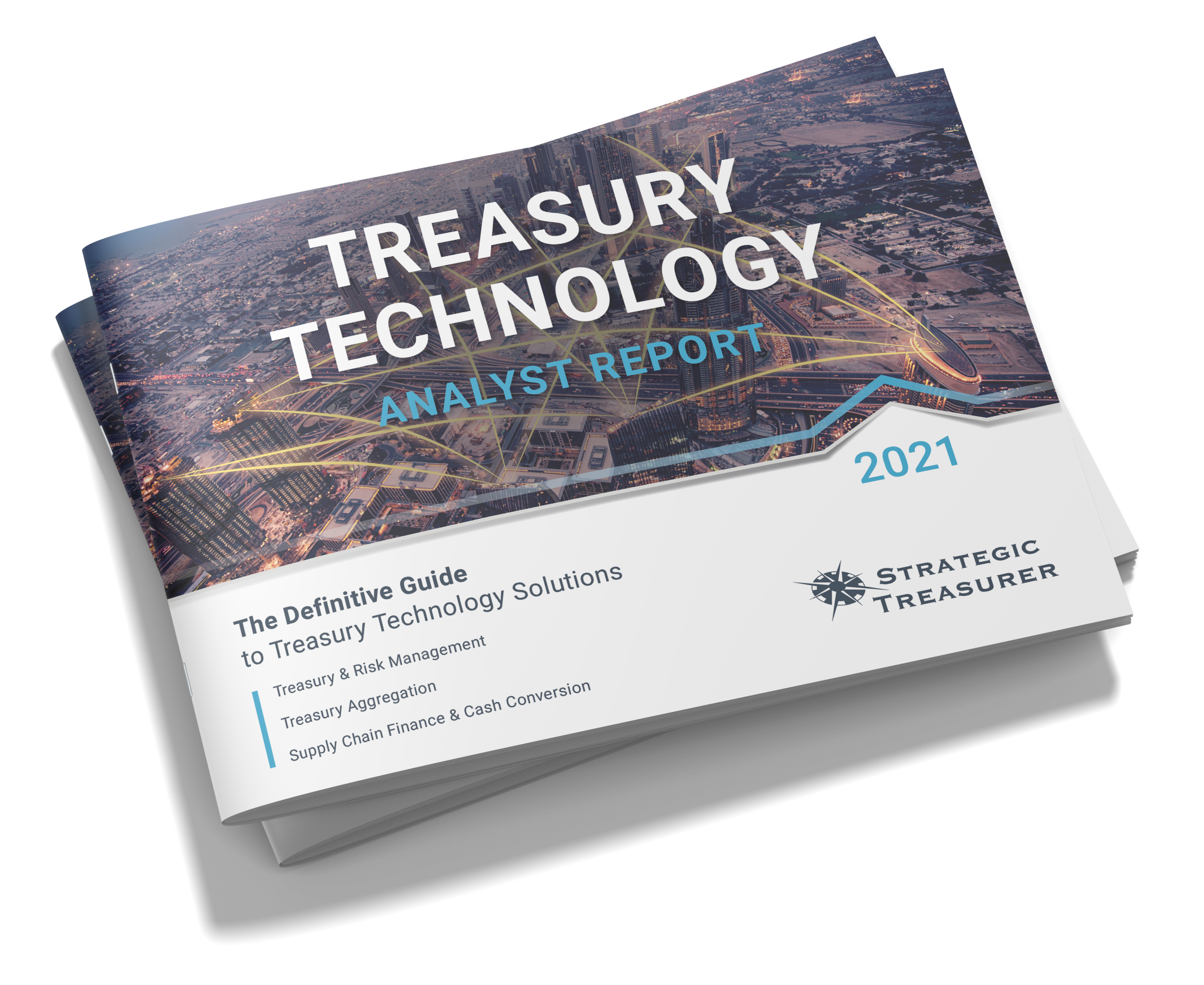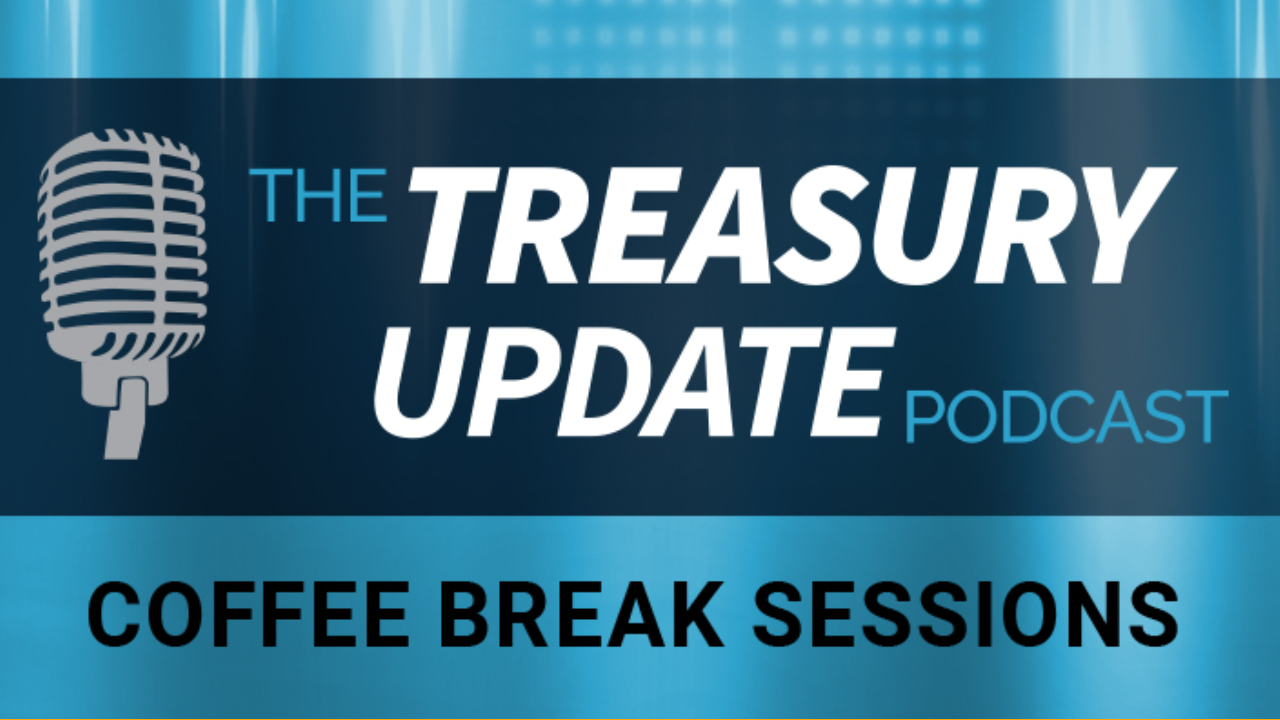
Session 69
Coffee Break Session:
What Is Market Risk?
Host:
Jason Campbell, Strategic Treasurer


Speaker:
Paul Galloway, Strategic Treasurer


Episode Transcription - (Coffee Break Session Series) - Episode 69 - What Is Market Risk?
Jason Campbell 00:03
Welcome to the Treasury Update Podcast, Coffee Break Sessions presented by Strategic Treasurer covering foundational topics and core treasury issues. And about the same amount of time it takes you to drink your cup of coffee. I’ll be your host Jason Campbell, business development leader at Strategic Treasurer. Chatting with me today is Paul Galloway, Senior Advisor at Strategic Treasurer. Paul, it’s great to have you back on again. How are you doing?
Paul Galloway 00:25
Doing good, Jason, thanks for having me. Again,
Jason Campbell 00:28
I love to continue the series around investing. I think the first couple episodes that we’ve done together talking about investing has been really intriguing, very interesting. And I’m really looking forward to this episode as well as to talk a little bit more into market risk. What exactly is market risk?
Paul Galloway 00:44
Kind of following on the portfolio conversations that we had market risk is the risk that’s associated with a potential loss on an investment due to changes in market variables. And so when investors talk about market risk, it’s often synonymous with risk premium, also known as beta or systemic risk. And we spent some time talking about beta what that was as part of the Greeks. So market risk is typically priced into a particular investment throughout a trading day, and things that can impact that can be all tied back to this concept of systemic risk, or beta.
Jason Campbell 01:34
So what are the various types of market risks?
Paul Galloway 01:37
That’s a great question. There are a variety of key market risks. And some of the ones that you’ll typically hear people refer to our business, financial, liquidity, currency, country and interest rates, there can be other types of risks that come into play. But these are the typical kinds of risks that you would hear, you may be wondering What do each of these mean? So business risk, it can be tied to the business services or products that are delivered. And that can come in various forms, you got companies that can be in a startup phase, or you know, a very immature phase associated with it, or there can be companies that are quite mature, they’ve been around for a long time and have established products and services that they deploy. And so there are different types of risks associated with those to kind of book ends of a business talked about the other is financial. So financial risks will be tied to the balance sheet, the earnings power of the organization, those risks are priced in the market risk, depending on what their financials look like, then there’s liquidity risk. So what liquidity risk means is, you know, how easily can you sell the investment in the open market? Or can you even sell it in the open market, there could be the US companies that don’t lend themselves to being tied to trading platforms or market trading platforms, such as the NASDAQ or the Dow, you can easily liquidate your position. So there is a liquidity premium are associated with that particular investment, then there’s currency risk. As you all know, every country has their own form of currency legal tender, this accepted for buying goods and services, or trading. And so currencies move just like stocks move, they move throughout the day. And so a currency underlying currency tied to an investment can have an impact on what the return is. There’s also country risks, some countries can be viewed as more risky than others. You’ve probably heard the term in the past, you know, developed countries like US, UK, and others that are like that, or emerging markets, you know, Taiwan, Vietnam, Korea, those types of countries that are still developing Korea’s a little more developed the hence the other two I I mentioned, but just as an example, there are emerging markets relative to developed markets, and there’s risks associated with that. The other one that I mentioned was interest rates. And of course, interest rates are on people’s minds, especially today as our own US Federal Reserve is, is meeting and will establish what type of interest rate move they’re gonna make. We’re expecting that there’s going to be a rise in interest rates. And when you have a rise in interest rates, that means two things, one, that it costs more to borrow funds, that cost can hit the earnings power of an organization when interest rates rise. So there can be an impact by interest rates.
Jason Campbell 05:02
That’s a lot of risks that somebody has to put into consideration as you think of, you know, where to actually put the cash in for these organizations that have that, in finding out the specifics of what route do we want to go? So when we think about those particular risks, whose job function is that and who has that stress, or that analysis piece of it, who kind of controls on where to kind of put these where they need to go to, to get a good return?
Paul Galloway 05:27
That’s a great question. So I’m going to answer that with a couple of different layers. When we think about investors, let’s break it into institutional and retail, we’ll just keep it that simple. institutional investors would be folks that are like insurance companies, or banks or mutual funds, pension, pension funds, their institutional investors. And then there are retail, which would be people like you and me, meaning we may have a brokerage account, we may have a financial advisor, that we make investments into an IRA account, or we participate in our company’s 401 K plan for retirement, if you’re an institutional investor, or stupidly a couple of different paths that you will take one you may have in house analysts and portfolio managers to make investment decisions. Or you can hire that out to third party managers that do the same thing. And it may be tied to specific types of investments, you can do a combination of do it in house and source it out to third party, then when you think about retail investors like you and me, you can do it yourself, you can do all of the analysis. If you’re into doing that, you can do it on your own. And you can do that through your brokerage plan, you can do that through your IRA, you can also make investment decisions around your 401 K plan that you have with your company, by allocating to various funds that they have a selection process, you can also hire folks out. So you can have a financial advisor that makes recommendations to you on how you should do your allocation of your investments. And typically, when you’re talking about 401, KS, and IRAs, we’re talking about making investments in mutual funds or index funds or exchange traded funds, these different types of funds that you can make investments. And so when you make investments in those funds, they hire analysts and portfolio managers to make decisions around investments and so that these folks are taking into consideration all these market risks that I talked about. So there’s, you know, there’s a quantitative and qualitative analysis is done by these folks, they can do bottom up top down, meaning they can start from a very micro or macro level, and drill down to the micro level. Or they can do a bottom up analysis where they’re looking at specific companies within an industry, they may be covering or managing, they take into consideration all these market risk factors. And often a lot of these are quantitative factors. But they’re also qualitative factors, especially associated with like, the business itself. You know, if you believe that the business is going to have a viable product or service, it may be, you know, country risk that you’re looking at, what are the geopolitical factors that come into play? And some of these things are not quantified? So they’re more of the qualitative factors. And so these are the types of folks that would make investment decisions, either institutional, or retail.
Jason Campbell 09:08
You know, it’s it’s funny, as you were going through all those examples, it made me really kind of question my own right. Yes, you were talking about us being a retail investor and finding out you know, like, with, with 401, K’s, do you have your funds, you know, do I have my funds, you know, allocated appropriately or in the IRA? am I investing in the right way? So it’s, it’s definitely it’s sometimes helpful to to also find that expert who can also help kind of give you that advice, where you may not be necessarily as educated as there’s so many options out there and making sure that you’re trying to put yourself in the best position as possible. And speaking of that, let’s look at a couple of things here. So how can market risk impact valuations?
Paul Galloway 09:44
Yeah, that’s a, that’s a great question. These factors can have a direct impact on valuation, you know, or the price of an investment. And I’ll just make an easy example, out of interest rates. In let’s say you make an investment, not in equity. But in a bond, a fixed income instrument. One of the things that impact bonds are interest rates, there is an inverse relationship between interest rates and the price of a bond. So let’s say you go out and buy a bond today. And a month later, interest rates rise by 50 basis points. So, so your interest rates go up, what do you think happens to the value of that bond, the value of that bond will decline, so it drops in value. So if you were to sell that bond a month from now, when an interest rate adjustment occurred, and interest rates go up, the value of that bond is going to be less than what you paid for it, including interest payments that would come off there. So when they price the bond, there’s two pieces to it. It’s interest payments, it’s the principal balance combined together, but that’s buried in the price. So when interest rates move up, or yields on bonds, move up the price of a bond declines. Likewise, when you think about the equity side of things, and you have business, financial or liquidity, or currency, country, type things that happen, if there are positive things that occur in the market related to these risks, you will see the market price go up. If there are things that are weighing heavy on these market factors, these risk factors, you’ll see prices decline. Now, you’ve seen a lot of volatility this year in stock prices. And you’ve seen the overall market indexes have declined this year. There are market risks, these systemic risks that we’ve been talking about, that have had a direct impact on that.
Jason Campbell 11:56
Well, thank you for joining me today. Paul really do appreciate the conversation around market risk, the different types of who uses it and really, what’s the impact of valuations and for our listeners, please be sure to tune in every first and third Thursday of the month for a new episode of the Coffee Break Sessions. As usual. If you have any questions, comments or feedback, please send us a note at podcast@strategictreasurer.com. Until next time, take care.
Announcer 12:22
This podcast is provided for informational purposes only and statements made by Strategic Treasurer LLC on this podcast are not intended as legal, business, consulting, or tax advice. For more information, visit and bookmark strategictreasurer.com.
Researching new treasury and finance technology can be overwhelming. Strategic Treasurer has stepped in to help. Explore our definitive guide to the treasury technology landscape and discover detailed, data-based coverage of:
- Treasury & Risk Management Systems
- Treasury Aggregators
- Supply Chain Finance & Cash Conversion Cycle
A part of the Treasury Update Podcast, Coffee Break Sessions are 6-12 minute bite-size episodes covering foundational topics and core treasury issues in about the same amount of time it takes you to drink your coffee. The show episodes are released every first and third Thursday of the month with Host Jason Campbell of Strategic Treasurer.




